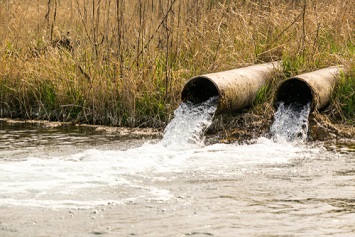In its Fall 2018 Regulatory Agenda, the EPA announced that it plans to finalize by December 2018 a May 2016 proposal intended to update regulations governing the Clean Water Act’s (CWA) National Pollutant Discharge Elimination System (NPDES).
“This proposed rule addresses application, permitting, monitoring, and reporting requirements that have become obsolete or outdated due to programmatic and technical changes that have occurred over the past 35 years,” the EPA stated in the proposal. “These topics were selected from previous NPDES regulatory streamlining efforts, recommendations from EPA Headquarters and Regional offices, and recommendations from state NPDES permitting agencies. With these proposed revisions and requests for public comment, EPA aims to allow easier determination of who is regulated, clarify applicable compliance requirements, and improve transparency by providing permitting authorities and the public with timely and quality access to information on regulated entities’ activities.”
In the agenda, the Agency essentially repeats those goals, emphasizing that the changes will allow for more timely development of NPDES permits.
The proposed rule covers 15 topics grouped into major categories of changes: permit application requirements; the water quality-based permitting process; permit objection, documentation, and process efficiencies; vessels exclusion; and the CWA section 401 certification process.
Pesticide Applications
The proposal sought to add a definition of pesticide applications to waters of the United States to mean “point source discharges to U.S. waters resulting from the application of biological pesticides or chemical pesticides that leave a residue.” This addition responds to a 2009 6th Circuit decision that found that some point source discharges of pesticides are pollutants under the CWA and are, therefore, subject to NPDES permitting. The definition would clarify who is already regulated by ensuring that NPDES regulations are consistent with the 6th circuit ruling. In October 2011, the EPA developed a Pesticide General Permit (PGP) to permit discharges for certain use patterns. Authorized states subsequently developed their own PGPs.
Congress is endeavoring to eliminate this requirement in the current Farm Bill. The House version of the bill would amend the CWA and the Federal Insecticide, Fungicide, and Rodenticide Act (FIFRA) to prohibit the EPA or a state from requiring a NPDES permit for a discharge of a pesticide from a point source into navigable waters if the discharge is approved under FIFRA.
WET, Dilution, and WQS
The proposal would also:
- Revise the definition of whole effluent toxicity (WET) to clarify that toxicity can include both acute (lethal) and chronic (lethal and sublethal) test endpoints. The current WET definition states that WET is “the aggregate toxic effect of an effluent measured directly by a toxicity test.”
- Exclude from permitting those discharges incidental to the normal operation of recreational vessels. The proposal would also provide for a temporary moratorium on permitting for discharges incidental to the normal operation of commercial fishing vessels (as defined in 46 USC 2101 and regardless of size) and other nonrecreational vessels less than 79 feet in length.
- Change aspects of information that must be included in applications for NPDES permits “to ensure the information is consistent with EPA’s current data standards and the NPDES Electronic Reporting Rule.
- Revise 40 CFR 122.44(d)(1) to expressly include a reference to 40 CFR 131.12 to ensure consistency with the antidegradation provisions in that section. Section 131.12 requires states to develop and adopt a statewide antidegradation policy and methods for implementing that policy. But this interpretation is not expressly included in the existing NPDES regulations at 40 CFR 122.44(d)(1).
- Update regulations concerning dilution allowances to clarify that while existing regulations allow consideration of dilution “where appropriate,” any allowance for dilution and mixing must be applied in a manner that will ensure that NPDES permits contain limits necessary to achieve water quality standards (WQS) as required by CWA 301(b)(1)(C) and 40 CFR 122.44(d)(1).
- Require the permit writer to make a reasonable potential determination based on relevant qualitative or quantitative data, analyses, or other valid and representative information for pollutants or pollutant parameters that could support the need for effluent limitations. This provision would affect how the permit writer determines that a discharge will cause or have the reasonable potential to cause or contribute to an excursion above any state WQS.
- Allow EPA regional offices to object to expired permits that have been administratively continued and are considered environmentally significant.
- Broaden the circumstances under which federal NPDES permits can be modified to include the addition of permit conditions based on more stringent Section 401 certification provisions that result from state administrative or judicial decisions.
- Require that permit writers produce more comprehensive and focused fact sheets to facilitate more efficient, transparent, and effective documentation of permitting decisions.
EPA’s proposal was published in the May 18, 2016, FR.

